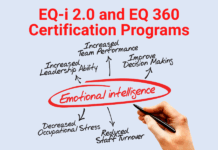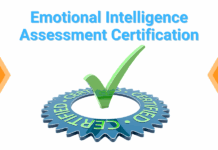
We know that almost all rules and policies have bad outcomes so we need to replace rules with other means to influence employee behavior. Last week, I discussed how accountability can be used instead of rules.
But is it possible to have no company rules at all? What needs to happen in order to trust the employees will do the right thing?
Any talk about leading without rules would be incomplete without mentioning the Brazilian business visionary, Ricardo Semler. Semler is the former CEO and president of Semco, which under his leadership grew from $4 million in revenue to over $160 million in about 20 years.
All of this without a mission statement, an org chart, or any written policies at all. And definitely without a rulebook.
So, what was the key to Semco’s success? One could point to various features of the radical industrial democracy that Semler ushered in during his tenure. But Semler himself epitomized it in his 2014 presentation at TED Global:
“We looked at it and we said, let’s devolve to these people, let’s give these people a company where we take away all the boarding school aspects of, this is when you arrive, this is how you dress, this is how you go to meetings, this is what you say, this is what you don’t say, and let’s see what’s left. And so, the question we were asking was, how can we be taking care of people? People are the only thing we have.”
Semler distributed that power in some unorthodox ways. For example, he let employees set their own salaries.
That’s right, over 25 years ago, Semler put a computer in the company cafeteria that revealed how much revenue the company was taking in, the profit margins from that revenue, how much employees inside the company made, and how much employees in similar positions made. Armed with that information, the employee was then allowed to set his or her own salary. Did people pay themselves ridiculous amounts? No, it turned out that information and peer pressure kept pay at industry norms.
This is just one example of many—like Semco’s refusal to track the amount of hours employees worked. Or that they could take time off during the “work week” to go see soccer matches. Or the fact that most meetings are voluntary, and that two seats at board meetings are open to the first employees to arrive. (Semler admitted that cleaning ladies sometimes voted on his board meetings. The result? They “kept us honest.”)
While Semco might be an extreme case of radical transparency and democracy, it’s not the only one. Tech company, Buffer, has a core value called, “Default to transparency.” They share employee salaries, equity breakdown, and even their financials; these numbers are available not just internally, but to the entire world, easily accessible from their website.
Transparency is an effective way to establish guidelines for behavior. Whether it’s data from within your own company or industry data, it establishes a range for normal or acceptable behavior. Bob Barry is a personal success coach who clearly delineates the difference between rules and guidelines. He says:
“Rules say, ‘You can’t be trusted, so we have rules to create structure and we expect you to follow them or face the consequences.’ Guidelines say, ‘We’ve got an idea that we need a sense of structure, or organization, otherwise things might get really crazy around here. We trust that you can do what’s right, but to help you we offer these guidelines.’ One creates resistance and the other invites cooperation.”
While you might be unwilling or unable to eliminate rules to the extent of Semco, how much more would your employees give you if you defaulted to Trust? (Yes an occasional bad apple (i.e., bad hire) will cause a problem that needs to be solved.) You need to ask questions like:
- What decisions am I willing to delegate to my people?
- What decisions do they wish I would delegate to them?
- What information do they need to have in order to do the right thing?
As Semlar wrote in a 1994 article for Harvard Business Review, “participation gives people control of their work, profit sharing gives them a reason to do it better, information tells them what’s working and what isn’t.”
What can you do to immediately increase transparency on your team?
–
Kevin Kruse is the author of Employee Engagement 2.0 and a top leadership speaker. Join his newsletter at kevinkruse.com.





